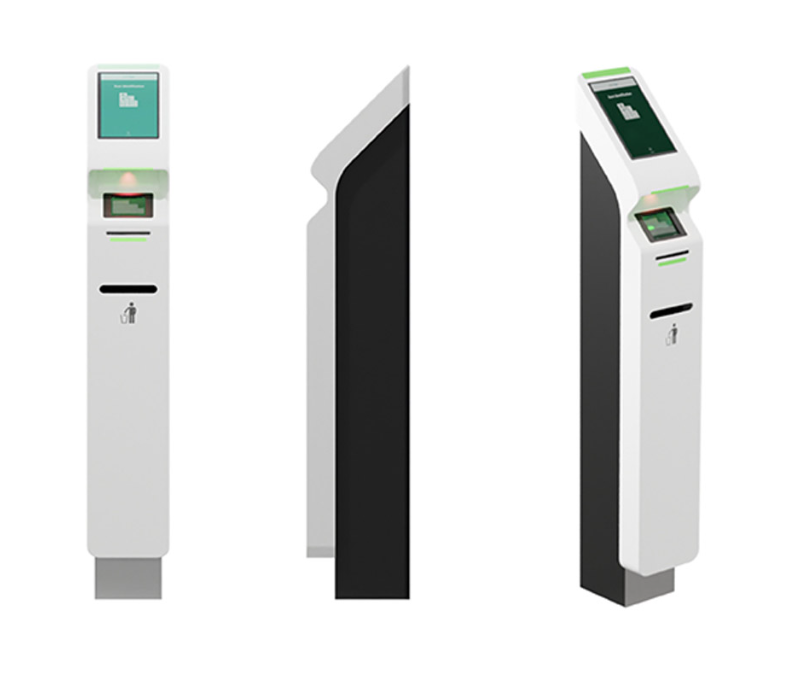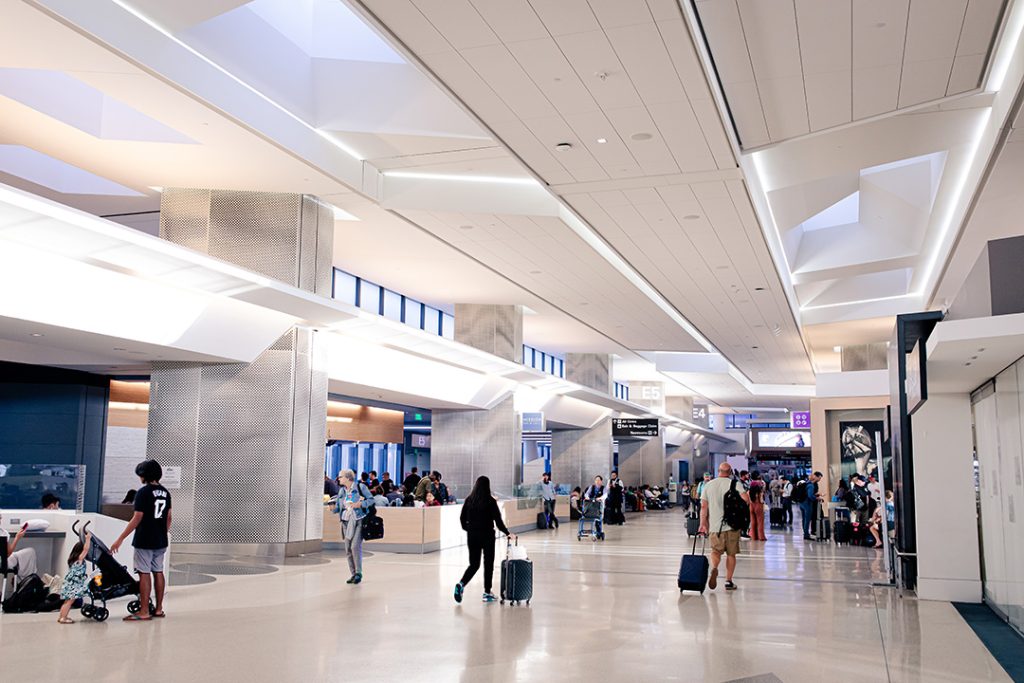INTERVIEW: Is the future of airport check-in offsite?
by Kirsty Tull
An interview with Andrew Barrett, exploring the idea of transitioning away from pure airport check-in, and take a look past the traditional curb-to-gate experience.

If you look around most major airports these days, it’s not out of place to see a self-bag drop in use. Like many innovations, there was a period in time when we questioned how passengers would adapt to this change. However, as recent history has shown, they have proven to be a significant value-add for airports and passengers alike.
So now we find ourselves on the precipice of the future state of airport operations and the next iteration of self-bag drop use – offsite check-in.
It is known that as humans, we always seek the path of least resistance. With this in mind, will off-site check-in be the solution to our need for convenience?
Below, we begin to explore the idea of transitioning away from pure airport check-in and pose some hairy questions to the technical innovators who are looking past the traditional curb-to-gate experience.
In the hot seat of questioning is Andrew Barrett, Business Solutions Manager Digital for Daifuku Oceania. Below, he shares his insights and responses to my interrogation… I mean, thoughtful questioning.
Throughout the discussion, we unpack, in detail, the considerations for implementing off-site check-in. Many of which have been curated from industry discussions; however, we invite you to share your feedback in the comments or email us directly with your questions.
We hope the following serves to be thought-provoking and stimulates conversation about the future of baggage handling. Enjoy!
Kirsty Tull: What is the current approach for airports working within their existing infrastructure and traditional check-in processes to keep up with increased travel demand?
Andrew Barrett: Airports are managing increased travel demand within existing infrastructure by improving efficiency rather than expanding terminals. This includes optimising layouts, enhancing queue management, and adopting self-service technologies, like kiosks and Auto Bag Drops, to reduce pressure on manual check-in.
Self-service also supports seasonal capacity changes and operational recovery by allowing airports to quickly and flexibly allocate additional services. Airports are also leveraging data and workforce management software to forecast demand and improve staff allocation, ensuring resources are deployed where they’re most needed. Closer coordination with airlines and ground handlers enables scalable improvements without major disruptions.
KT: Studies indicate that nearly 40% of passenger complaints relate to wait times at check-in and security checkpoints. Have we seen an improvement in these figures since the implementation of self-bag drops and check-in kiosks? And, how is this being measured?
AB: Yes, there’s been a noticeable improvement in wait time-related complaints at many airports that have implemented self-service technologies such as self-bag drops and check-in kiosks.
According to IATA, their Fast Travel program, designed to improve the passenger journey through automation, has played a significant role in driving this change. The program targets six key areas of the journey, including self-check-in, self-bag tagging, self-boarding, and flight rebooking, with the goal of enhancing efficiency and reducing processing times.
Airports and airlines that have adopted Fast Travel solutions report shorter queues, improved passenger flow, and greater satisfaction. Studies have shown that self-service options can reduce check-in and bag drop times by up to 40–50%, depending on the airport’s setup.
To measure these improvements, airports now have access to sensor-based tracking, heat mapping, and video analytics that monitor queue lengths and passenger flow in real-time. This operational data is complemented by passenger satisfaction surveys (such as those from ACI and IATA). In some cases, On-Time Performance (OTP) is also used as a broader indicator of process efficiency, especially in how effectively departures are supported through faster check-in and baggage processing.
KT: What potential impact do off-site check-in processes have on the aviation industry?
AB: Offsite check-in has the potential to significantly impact the aviation industry by improving passenger experience, operational efficiency, and opening up new commercial opportunities.
By enabling passengers to check in, print bag tags, and manage ancillary services from locations such as hotels, transport hubs, cruise terminals, or other key points along the travel journey, off-site check-in reduces congestion in terminal areas and streamlines the overall passenger flow.
This shift not only enhances convenience and flexibility for travellers but also allows airports and airlines to optimise staffing and manage peak periods more effectively without requiring major infrastructure upgrades.
With current technology, deploying off-site check-in is incredibly flexible, limited only by your imagination. It allows for pop-up check-in services to be placed in high-traffic locations, such as hotels, cruise ports, or large venues, creating new business opportunities through strategic partnerships. Additionally, the concept supports the expansion of the airport campus beyond the traditional terminal footprint, incorporating satellite bag check and kiosk zones that bring the airport experience closer to the passenger.
This approach is especially valuable for regional airports and tourism-focused destinations, offering scalable, cost-effective solutions that also support contactless processing and greater resilience during periods of disruption or high demand.
KT: Can you walk me through what the transition to remote self-bag drop looks like and how an airport would integrate it into their operations?
AB: The transition to remote self-bag drop is a strategic process that involves collaboration, planning, and a strong focus on passenger experience.
At Daifuku, our methodology emphasises co-collaboration with airport operators and airlines from the very beginning. We believe that delivering an effective solution means bringing all key stakeholders, airlines, ground handlers, IT, operations, and even security, into the conversation from the initial design phase through to deployment.
The process typically begins with a joint review of the airport’s current operating environment, future passenger growth targets, and any known constraints. From there, we work together to develop a tailored self-bag drop concept that integrates seamlessly into both terminal and potential off-site locations. This can include customer trials, usability testing, and iterative improvements based on real-world feedback. These trials allow stakeholders to observe actual passenger interactions, which helps refine placement, user interface, and processing logic, before broader rollout.
What sets our approach apart is the inclusion of advanced software, which provides real-time baggage visibility, integrates with existing departure control systems (DCS), and is compatible with a range of airport and airline systems. We also offer state-of-the-art hardware that is modular, durable, and designed with both security and passenger ease of use in mind.
For airports, the transition is not just about installing new equipment; it’s about adapting operational processes, engaging stakeholders at all levels, and future-proofing the passenger experience. Whether implemented in-terminal or at off-airport locations, like hotels or transport hubs, remote self-bag drop represents a flexible and scalable solution that aligns with the industry’s move toward more autonomous and decentralised passenger processing.
KT: What type of kiosk design is best suited to remote check-in?
AB: The Tag-UX kiosk is particularly well-suited for remote check-in environments, especially as more airlines encourage passengers to use their web and mobile apps for check-in, seat selection, and boarding pass issuance. The Tag-UX focuses on enabling passengers to quickly print a bag tag, allowing them to either drop their bag at a self-bag drop upon entering the airport or, where available, complete the process at a remote location with bag drop capabilities. This streamlined approach complements digital check-in behaviours and supports faster, more autonomous processing.
A key advantage of the Tag-UX kiosk is its smaller footprint, making it ideal for space-constrained off-site locations such as hotel lobbies, cruise terminals, transport hubs, and large public venues. Its compact and modular design allows it to be deployed easily without compromising on functionality.
The kiosk can also be configured with advanced features to suit a wide range of operational needs. These include biometric authentication, such as facial recognition, to support secure identity verification and enable touchless processing; RFID bag tag compatibility for improved baggage tracking, and visibility throughout the handling system; and multi-airline support, making it highly effective in common-use or shared environments.
With real-time integration to airline departure control systems, the Tag-UX also supports remote monitoring, software updates, and data analytics, helping operators maintain performance and service quality. Overall, it provides a highly scalable, flexible solution for extending check-in and bag tagging services beyond the terminal, while supporting the industry‘s move toward decentralised and passenger-driven processing models.

Tag-UX – Self Bag Tag Solution
KT: How does integrated airport software translate to baggage visibility when off-site?
AB: Integrated airport software ensures consistent baggage visibility, even when check-in or bag tagging occurs off-site. In these scenarios, the bag tag is issued and linked to the passenger’s record via the Departure Control System (DCS), but the Bag Source Message (BSM) may remain inactive until the bag is physically handed over at the airport. Despite the delay in BSM activation, the system maintains all the necessary data, ensuring a seamless handover once the bag enters the terminal.
When the bag is dropped at a self-service bag drop or a staffed counter, the BSM is triggered, and the bag is fully integrated into the airport’s baggage handling and reconciliation systems. This approach allows passengers and airlines to benefit from extended processing capabilities while still maintaining the same level of traceability and operational control. Integrated software bridges the gap between remote and in-terminal processes, supporting accurate baggage tracking, minimising the risk of mishandling, and enhancing the overall efficiency of the end-to-end journey.
KT: What would occur if the luggage is not conveyable?
AB: If the luggage is not conveyable, meaning it cannot be processed through the automated baggage handling system due to its size, shape, weight, or content, it is diverted to an alternative handling process. At the point of bag drop, whether at a self-service unit or a staffed counter, the system detects the bag as non-conveyable through weight or size checks and prompts the passenger or staff to redirect it.
These bags are usually taken to an oversized baggage area, where they are manually handled and security screened before being routed to the aircraft. Even though the bag bypasses the standard system, the Bag Source Message (BSM) remains active and linked to the passenger, ensuring full traceability.
In off-site check-in scenarios, passengers would still receive a bag tag. Upon arrival at the airport, instructions would direct them to the appropriate oversized baggage drop-off point. This ensures the bag is processed and tracked correctly without disrupting the overall journey.
KT: Where are bags inducted, and how do they make their way to the airport?
AB: In an off-site check-in model, bags are inducted at remote locations such as hotels, cruise terminals, or transport hubs, where passengers tag and hand over their luggage at a secure drop point. These locations are equipped with scanning and tracking systems that prepare the bags for transport.
Once accepted, bags are moved to the airport by approved logistics providers using secure handling procedures that comply with aviation security standards. Tracking is maintained throughout, with integration to the airline’s Departure Control System (DCS) and the airport’s baggage handling system (BHS).
At the airport, bags enter the baggage system through a dedicated entry point, where the Bag Source Message (BSM) is activated, if not already done. From there, bags follow the standard screening and sorting process before being loaded onto the correct flight, ensuring full visibility and security throughout the journey.
The Path to Greater Passenger Convenience
For airports looking to enhance their operations, remote self-service bag drops represent a significant opportunity to streamline check-ins, optimise resource allocation, and improve passenger flow.
Daifuku’s strategic partnership model provides not only cutting-edge technology but also the expertise needed to implement, refine, and scale self-service solutions in a sustainable manner.
As air travel continues to evolve, airports that invest in automation and passenger-centric technologies will set the standard for efficiency and convenience..
The only question that remains: Are you ready to embrace the future of seamless travel?
There are many ways to connect with Daifuku.
To explore the future of baggage handling, contact Andrew Barrett, today.
More information:
Learn more about Daifuku’s innovative self-service solutions for airports and airlines.
View case studies:
Related articles
Dec 15, 2025 • 2 min read
Daifuku Senior Project Manager Named Top 40 Under 40 for 2025
Never miss an article
Subscribe to our newsletter and be the first in the know.
Join the conversation
For the latest industry articles and networking



